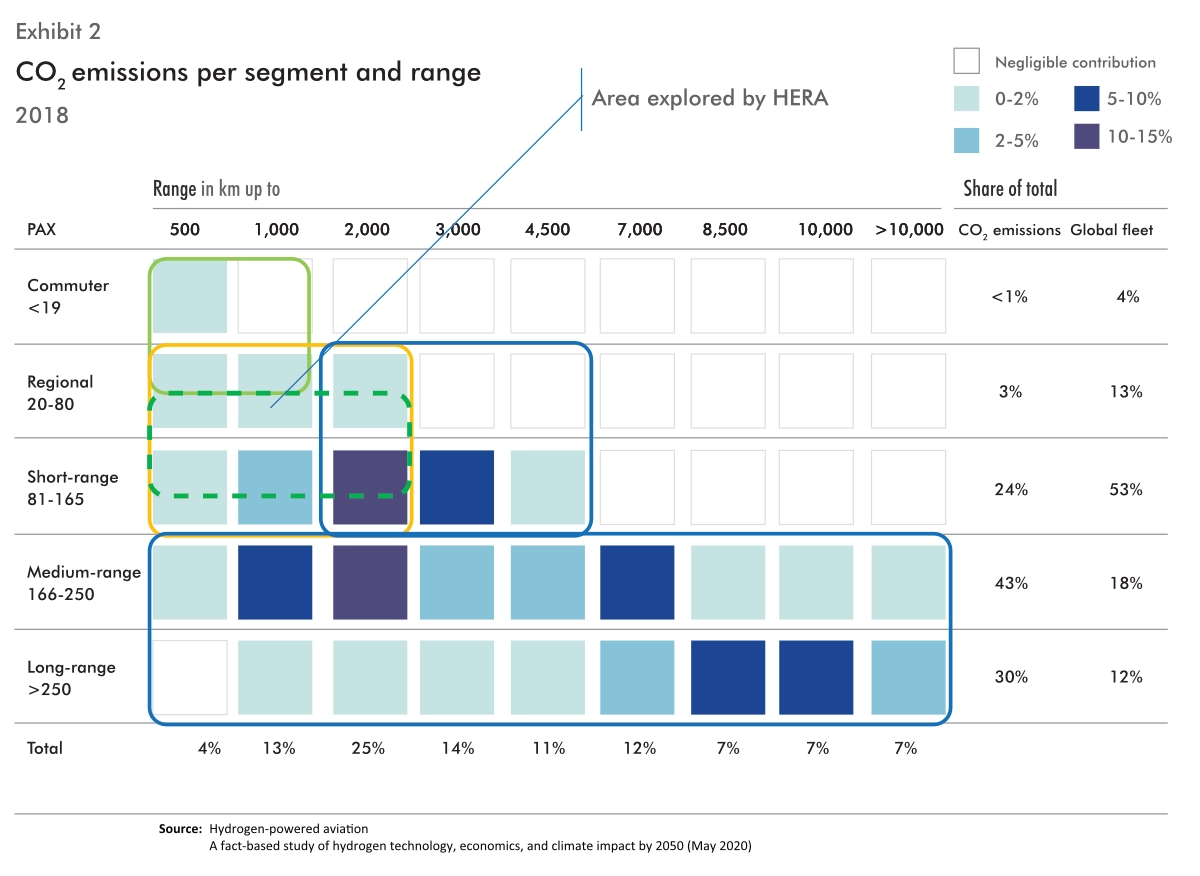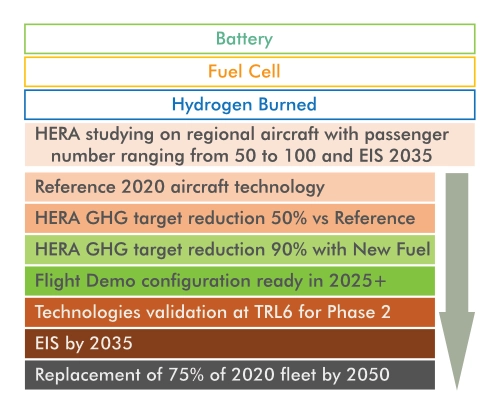HERA's ambition is to be the first to pursue the hybrid-electric regional aircraft, supported also by full use of SAF and, eventually, hydrogen burning if feasible for the regional scale, as a realistic and operative aircraft at real size, having a realistic payload of interest for operators and passengers, fulfilling the certification rules, and proposing solutions to operate it.
The ambition of HERA solutions:
- HERA results will offer solutions to meet the societal objectives for fast and flexible mobility and equal connectivity to all despite living in big cities or rural areas rural and remote regions offering good social conditions, reskilling opportunities, and provides attractive jobs.
- HERA will face and combine the optimal solutions against the two challenges set in the SRIA vision requiring primarily a GHG reduction of 50% and the complex technical, economical and societal scenario necessary to pursue that to have a sensible impact mainly addressing the regional target of GHG reduction of -50%.


The ambition of HERA solutions on a technical level will be:
The path to climate-neutral aviation will be hard and complex involving many aspects: power, weight and volume, wide environmental conditions, severe regulation to preserve safety records, global operation. Electrification is a key feature for aviation sustainability. Until recently, aircraft required MW power, size and weight, functionalities did not suggest electrical propulsion as feasible for aviation. Advancements in electrical systems and power storage make it now a realistic option by hybridization of thermal and electrical sources. Electrification of regional aircraft propulsion is widely considered as the earliest candidate –EIS in 2035- to reduce emissions in addition and more than incremental evolution of aircraft thermal engines. Beyond that, regional aircraft MW range electrification of critical functions, such as propulsion, are mostly scalable to larger aircraft since regional case share with them safety and certification criteria, operative issues, airports features.
The globally shared ambition is few MW electrical network and devices, able to cope with severe aviation functions and safety, deliver a relevant share of propulsive power from electric sources thus reducing the thermal engine size. This hybrid-electric solution allows a sensible reduction of emission by mid-2030 for the regional segment that may be further complemented by low or zero carbon emission power sources for the thermal engines using 100% Sustainable Aviation Fuel (SAF) or burning hydrogen. The diagram below shows the perimeter that HERA will tackle on top of a consolidated view of alternative power sources capabilities and their impact at 2035. The new energy sources at low GHG emissions -batteries, fuel cells and hydrogen burning- have a limited area of optimal usage. Capabilities of those energy sources deployed to the aviation case do not allow the current flexibility to widely use, despite the aircraft segment, same propulsion technology and actually, same aircraft configuration and systems. The limited optimal application range of new low GHG emission technologies has consequence on HERA implementation in terms of aircraft configuration to study. Based on the CO2 emission per segment and range diagram a regional aircraft, given typical size, range and mission will enjoy a hybrid-electric propulsion with a thermal engine burning 100% SAF and possibly hydrogen coupled to an electrical propulsion based on fuel cells and/or batteries. The final choice will depend on several factors including the integration and operative features of each power source, such as weight, energy source power density and volume, safety consideration, effects on aircraft performance, flexibility of usage, productivity index and sustainability. Finally, power share among batteries, fuel cell and thermal engine will depend on aircraft size and typical mission: the bigger the size and longer the flight hydrogen burning will mostly prevail; the lower the size and shorter the flight electrical power sources are a better choice for energy efficiency and environmental impact.
HERA: Hybrid Electric
Regional Aircraft Objective responding
HORIZON-JU-CLEAN-AVIATION-2022-01-TRA-01

